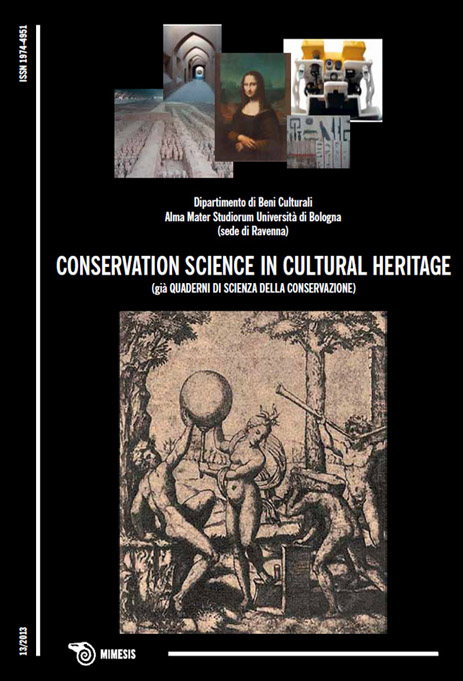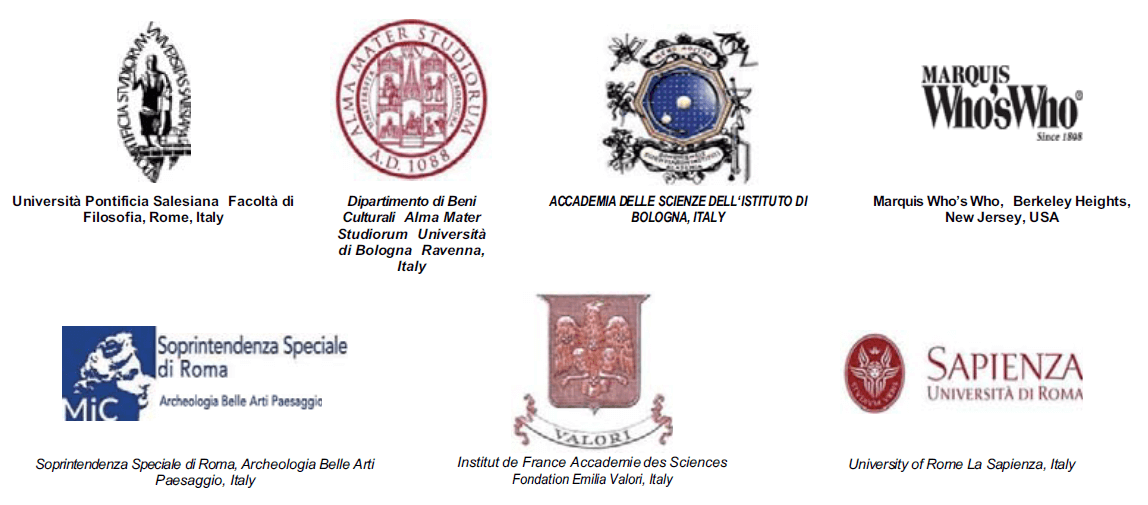The reclamation of Gandhara cultural heritage. Its uses in present-day Khyber-Pukhtunkhwa
DOI:
https://doi.org/10.6092/issn.1973-9494/4187Keywords:
Gandhara, cultural heritage, KP, history, archaeologyAbstract
Summary
This paper is divided into three parts. The first part gives a brief introduction to Gandhara in terms of geography and research activities in a historical perspective. The second part discusses the need for community involvement in Gandhara archaeology and the importance of Cultural Resource Management (CRM) in the field. The last part demonstrates the social, cultural, environmental, economic, political and religious returns as a result of these activities.
Riassunto
L’articolo di divide in tre parti: la prima fornisce una breve introduzione a Gandhara dal punto di vista geografico e delle attività di ricerca in una prospettiva storica. La seconda parte tratta del bisogno di un coinvolgimento della comunità nell’archeologia e l’importanza della Gestione delle Risorse Culturali (GRC), mentre la terza, infine, dimostra un ritorno in termini sociali, culturali, ambientali, economici, politici e religiosi come risultato di tali attività.
Résumé
L’article se compose de trois parties : la première donne une courte introduction de Gandhara du point de vue géographique, et des activités de recherche au niveau historique. La deuxième partie parle de la nécessité que la communauté soit impliquée dans l’archéologie, et de l’importance dela Gestiondes Ressources Culturelles (GRC). Enfin, la troisième partie montre un retour en termes sociaux, culturels, écologiques, économiques, politiques et religieux, comme résultat de ces activités.
Zusammenfassung
Der Artikel ist in drei Teile unterteilt: der erste liefert eine kurze Einführung in die geographische Lage und die Forschungstätigkeit in Gandhara unter historischen Gesichtspunkten. Der zweite Teil befasst sich mit dem Bedürfnis, die Gemeinschaft in die archäologische Tätigkeit einzubeziehen, und mit der Bedeutung des Kulturgütermanagements (GRC), während der dritte Teil die Ergebnisse dieser Tätigkeit im Hinblick auf ihre soziale, kulturelle, umwelttechnische, wirtschaftliche, politische und religiöse Auswirkung ausweist.
Resumen
El artículo se divide en tres partes: la primera presenta una breve introducción sobre Gandhara desde el punto de vista geográfico y de las actividades de investigación con perspectiva histórica. La segunda parte se ocupa de la necesidad de la participación de la comunidad en la arqueología y la importancia de la Gestión de los Recursos Culturales (GRC); mientras que la tercera, y última, parte demuestra el retorno en términos sociales, culturales, medioambientales, económicos, políticos y religiosos como resultado de dichas actividades.
Резюме
Статья делиться на три части. Первая содержит короткое вступление о Гандхаре с точки зрения географии и исследовательской деятельности в исторической перспективе. Вторая часть посвящена необходимости привлечения народа к археологии и важности Управления Культурными Ресурсами. В третьей части показывается как результат этой исследовательской деятельности отдача в социальном, культурном, экологическом, экономическом, политическом и религиозном плане.
摘要
该文章分为三个部分:第一部分从地理位置上和历史角度的研究上简短地介绍了健驮逻国。
第二部分介绍了考古学社会参与的必要性和文化资源管理(GRC)的重要性,最后第三部分强调了这些项目在社会、文化、环境、经济、政治和宗教方面存在的积极影响。
References
ZWALF, W., 1996, A Catalogue of the Gandhāra Sculpture in the British Museum, vol. I, British Museum Press, London
SALOMON, R., ALLCHIN R., BARNARD M., 1999, Ancient Buddhist Scrolls from Gandhara: The British Library Kharoșțhī Fragments, University of Washington Press, Seattle
KONISHI K., MASATOSHI A., 1998, Rise of Gandhara Culture in Pakistan, Journal of Asian Civilizations XXI, pp. 65–70
Dar S., 1990, CRITERIA AND PROBLEMS OF THE STUDY OF GANDHARA ART, Journal of Central Asia, XIII, pp. 149–190
DAR S., 1998, Gandhara Art in Perspective, Journal of Asian Civilizations, XXI, pp. 71–118
ASHRAF K., 2011a, Outline of the Archaeological Field Research in Swat Valley Carried out by Pakistani Institutions, Journal of Asian Civilizations, 34, pp. 81–93
ASHRAF K., 2011b, Research and Excavations in Swat: The Pakistani Contribution. Bibliography (1968–2011), Journal of Asian Civilizations, 34, pp. 355–360
TADDEI M., 1998, Ten Years of Research in the Art of Gandhara, 1987–1997, An Iconic journey from India to China, 26-9-1998 – 15-12-1998, Jointly Presented by the Department of Fine Arts & the University Museum & Art Galley, the University of Hong Kong, University Museum & Art Gallery, University of Hong Kong
OLIVIERI L., 2006a, Outline History of the IsIAO Italian Archaeological Mission in Pakistan (1956–2006), East and West, 56, pp. 23–41
OLIVIERI L., 2006b, The IsIAO Italian Archaeological Mission in Pakistan. A Selected Bibliography (1956–2006), East and West, 56, pp. 301–318
OLIVIERI L., 2011, Bibliography (1940–2011): IsMEO/IsIAO activities and research in Northern Pakistan, Journal of Asian Civilizations 34/1 (Italian Archaeology and Anthropology in Northern Pakistan: 1955–2011), pp. 313–354
TANWEER T., 2011, The Italian Archaeological Mission in Pakistan. A Preliminary Archival Study, Journal of Asian Civilizations, 34/1 (Italian Archaeology and Anthropology in Northern Pakistan: 1955–2011), pp- 39–47
FAULKNER N., 2003, Archaeology from below: a socialist perspective,
http://www.academia.edu/1238812/Faulkner_N._2003._Archaeology_from_below
MARSHALL Y., 2002, What is Community Archaeology?, World Archaeology, 34, pp. 211–219
MCMANANON F., 1991, The Many Publics for Archaeology, American Antiquity, 56, pp. 121-130
HASAN K., MAHMOOD A., MAHMOOD N., 1997, Education in Pakistan: fifty years of neglect [with comments], The Pakistan Development Review, 36, 4, Papers and Proceedings Part II, Thirteenth Annual General Meeting and Conference of the Pakistan Society of Development Economists Islamabad, december 15-17, 1997, pp. 647–667
AL MUJAHID S., 2005, History – The State of the Discipline: an overview, in 20th Pakistan History Conference, Karachi, 13–15 April 2005. Karachi: The Conference Secretary
COHEN S.P., 2005, The Idea of Pakistan. Lahore: Vanguard Books.
KHANDWALLA K.P., 2004, Preservation of India’s Archaeological Heritage through Archaeologists-Public Interaction: Issues and Strategies, Himanshu Prabha Ray & Carla M. Sinopoli, Archaeology as history in Early South Asia, New Delhi: Indian Council of Historical Research, pp. 118–152
PADDAYYA K., 2002–2003, The Expanding Horizons of Indian Archaeology, Bulletin of the Deccan College Post-Graduate and Research Institute (Deemed University), 62, pp. 291–309
OLIVIERI L.M., 2009, East and West 59, pp. 379–384
JANSEN-VERBEKE M., RUSSO A., 2008, Innovative research on the Spatial Dynamics of Cultural Tourism, in Jansen-Verbeke, Myriam & Gerda K. Priestley (eds.), Cultural Resources for Tourism: Patterns, Processes and Policies, Nova Science Publishers, Inc., New York
MUGHAL M.R., 2011, Heritage Preservation in Pakistan, State Vandalism of History in Pakistan, Lahore: Vanguard Books
RENFREW C., 2000, Loot, Legitimacy and Ownership: The Ethical Crisis in Archaeology, Gerald Duckworth, London
CHRISTENSON A.L., 1979, The Role of Museums in Cultural Resource Management, American Antiquity, 44, pp. 161–163
IHSAN A., CONINGHAM R., 1998, Recording and Preserving Gandhara’s Cultural Heritage, Culture without Context, pp. 10–16; retrieved: November 13, 2012
http://traffickingculture.org/wp-content/uploads/2012/07/CWC-3.pdf
FOWLER D., 1982, Cultural Resource Management, Advances in Archeological Method and Theory, 5 pp. 1–50
KNUDSON R., 2001, Cultural Resource Management in Context, Archives and Museums Informatics, 13 pp. 359–381, retrieved: November 15, 2012
http://faculty.ksu.edu.sa/naserz/DocLib/CRM%20incontext.pdf
FAGAN B., 1991, In the Beginning: An Introduction to Archaeology, 7th ed., HarperCollins Publishers, New York
CARR E. H., 1961, What is History?, The MacMillan Press Ltd, London
COLLINGWOOD R.G., 2000, The idea of History, ed. Jan Van Dussen, revised edition with lectures 1926-1928
Ford R., 1979, Paleoethnobotany in American Archaeology, Advances in Archaeological Method and Theory, 2, pp. 285–336
ALLCHIN B., 1994, Environmental Conditions in the Lower Indus Valley in Harappan Times: A Plea for Research, South Asian Archaeology 1993 (eds.) Asko Parpola & Petteri Koskikallio, 1, pp. 43–46
MYRDAL-RUNEBJER E., 1994, Vävala Väva-Sigiri Mahaväma Irrigation System: Preliminary Results from an Archaeological Case Study, South Asian Archaeology 1993 (eds.) Asko Parpola & Petteri Koskikallio, 2, pp. 551–562
OLIVIERI L. M., VIDALE M, et al., 2006, Archaeology and Settlement history in a Test Area of the Swat Valley: Preliminary Report on the AMSV Project (1st Phase), Eat and West 56, pp. 73–150
TRIGGER B., 1989, A History of Archaeological Thought. 2nd ed., Cambridge University Press
DANI A.H., 2008, Contribution of Gandhara to World Civilization, Journal of Asian Civilizations, XXI, pp. 151–155
DANI A.H., 2008, History of Pakistan: Pakistan through Ages, Lahore: Sang-e-Meel Publications
Downloads
Published
How to Cite
Issue
Section
License
Copyright (c) 2013 Rafiullah Khan
Copyrights and publishing rights of all the texts on this journal belong to the respective authors without restrictions. Authors grant the journal right of first publication.
This journal is licensed under a Creative Commons Attribution 4.0 International License (full legal code).
See also our Open Access Policy.






